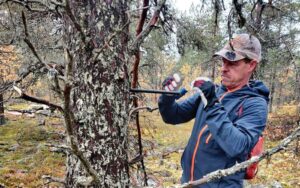Our planet is constantly changing under the forces of humans, geology, and even the Sun.
And while we can see what humans do daily and what geology does through quakes and eruptions almost weekly, catching the Sun being its bad self is a lot harder because it’s a lot more rare.
The biggest solar outbursts in modern history occurred on the first days of September in 1859. A massive complex of sunspots released a powerful geomagnetic storm that was documented by Richard Carrington and Richard Hodgson. Not only was this the first solar flare ever documented, but it was also the most powerful ever documented to hit our Earth. As ionized particles from the sun lashed the Earth’s magnetic field, they generated electrical fields in the early electric power grid and caused blackouts, while also allowing the telegraph network to work with the batteries unattached!
While lots of accounts of this event exist, few of them allow us to measure the size of this event in a way that allows direct comparison with other solar flares.
Now, in a paper published in Geophysical Research Letters, researchers present direct measurements of a spike in radiocarbon concentration in tree rings formed after the event.

When high-energy particles from the Sun interact with our upper atmosphere, it can produce carbon-14. Over time, this unstable carbon can sink into the lower atmosphere, combine into carbon dioxide molecules, and get drawn into plants. Researchers looking at tees in Lapland separated out carbon samples formed across time and were able to identify the increased carbon-14 from the Carrington Event.
In the life of some trees, the 165 years since the Carrington Event is just a blink of an eye. This technique will now make it possible to determine, using tree ring samples going further back in time, how common this size event may be. Large storms are known to have taken place in 1730 and 1770, but in the pre-electronics era, there just weren’t means to study the storms beyond noting where aurorae were visible. Tree rings just might give us added details on intensity.
When future results on those earlier storms are published, we’ll bring them to you right here at EVSN.
